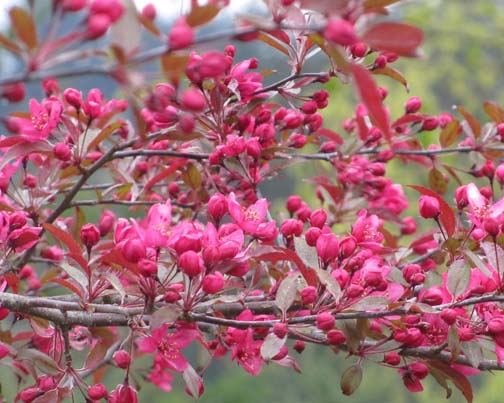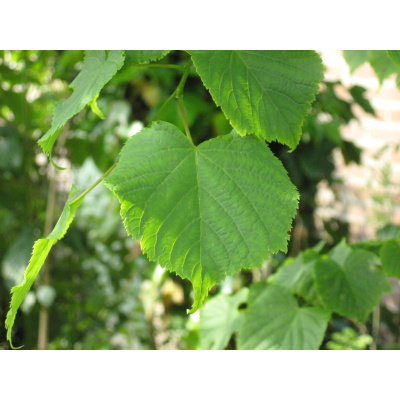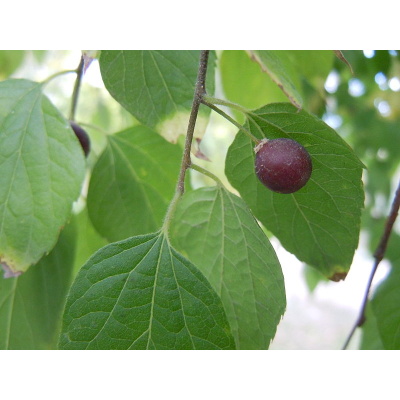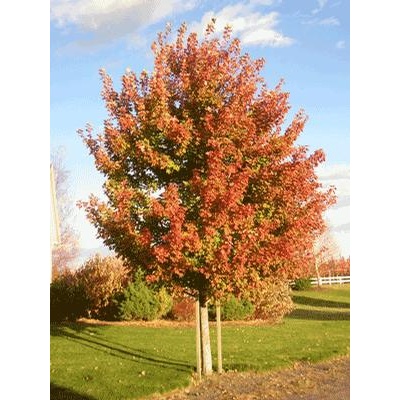Description
 Malus ‘JFS-KW5’ ROYAL RAINDROPS
Malus ‘JFS-KW5’ ROYAL RAINDROPS
Common Name: flowering crabapple | Type: Tree
Family: Rosaceae | Zone: 4 to 8
Height: 15.00 to 20.00 feet | Spread: 12.00 to 16.00 feet
Bloom Time: April | Bloom Description: Magenta-pink
Sun: Full sun | Water: Medium
Maintenance: Low | Suggested Use: Flowering Tree
Flower: Showy | Leaf: Colorful, Good Fall
Attracts: Birds, Butterflies | Fruit: Showy, Edible
Other: Winter Interest | Tolerate: Clay Soil, Air Pollution
Culture
Best grown in medium moisture, well-drained, acidic loams in full sun. Adapts to a wide range of soils. Established trees have some drought tolerance. Although some flowers may be lost, it is best to prune this tree as needed in late winter. Spring pruning should be avoided as it produces fresh, open cuts where fireblight bacterium can enter.
Noteworthy Characteristics
Malus is a genus of about 35 species of deciduous trees and shrubs from Europe, Asia and North America.
Genus name from Latin is an ancient name for apple.
‘JFS-KW5’, commonly sold under the trade name of ROYAL RAINDROPS, is an upright-spreading , disease-resistant, easy-to-grow, crabapple tree that features (1) deeply lobed purple foliage (early leaves may be entire) which retains excellent color throughout summer, (2) magenta-pink single flowers in spring (April in St. Louis), (3) tiny maroon-red crabapples (1/4″ diameter) that mature in late summer and (4) excellent orange-red fall color. This small tree typically matures to 15-20’ tall and to 12-16′ wide with a dense rounded canopy and excellent foliage density. Crabapples persist on the tree into early winter and are an attractive food source for birds. ‘JFS-KW5’ is an open-pollinated seedling of Malus transitoria ‘Schmidtcutleaf’. U.S. Plant Patent PP14,375 was issued on December 16, 2003.
Problems
The main diseases of crabapple are scab, fire blight, rusts, leaf spot and powdery mildew. Potential insect pests are of lesser concern and include tent caterpillars, aphids, Japanese beetles, borers and scale. Spider mites may occur.
ROYAL RAINDROPS has good disease resistance to the main diseases of crabapples.




Reviews
There are no reviews yet.